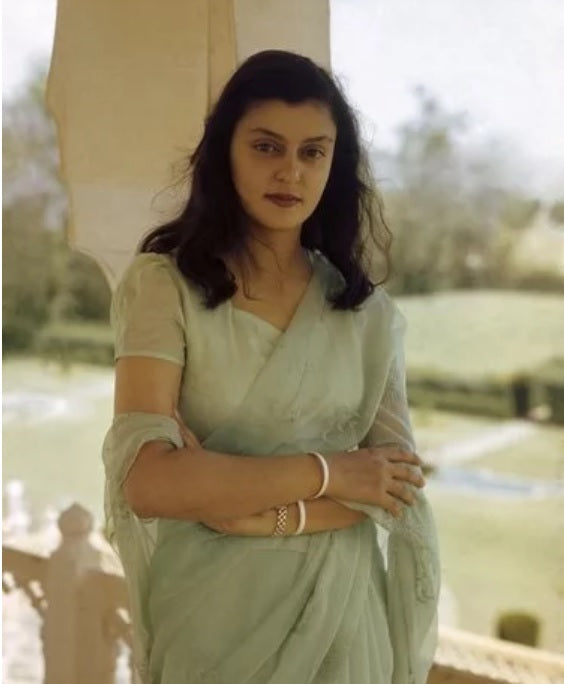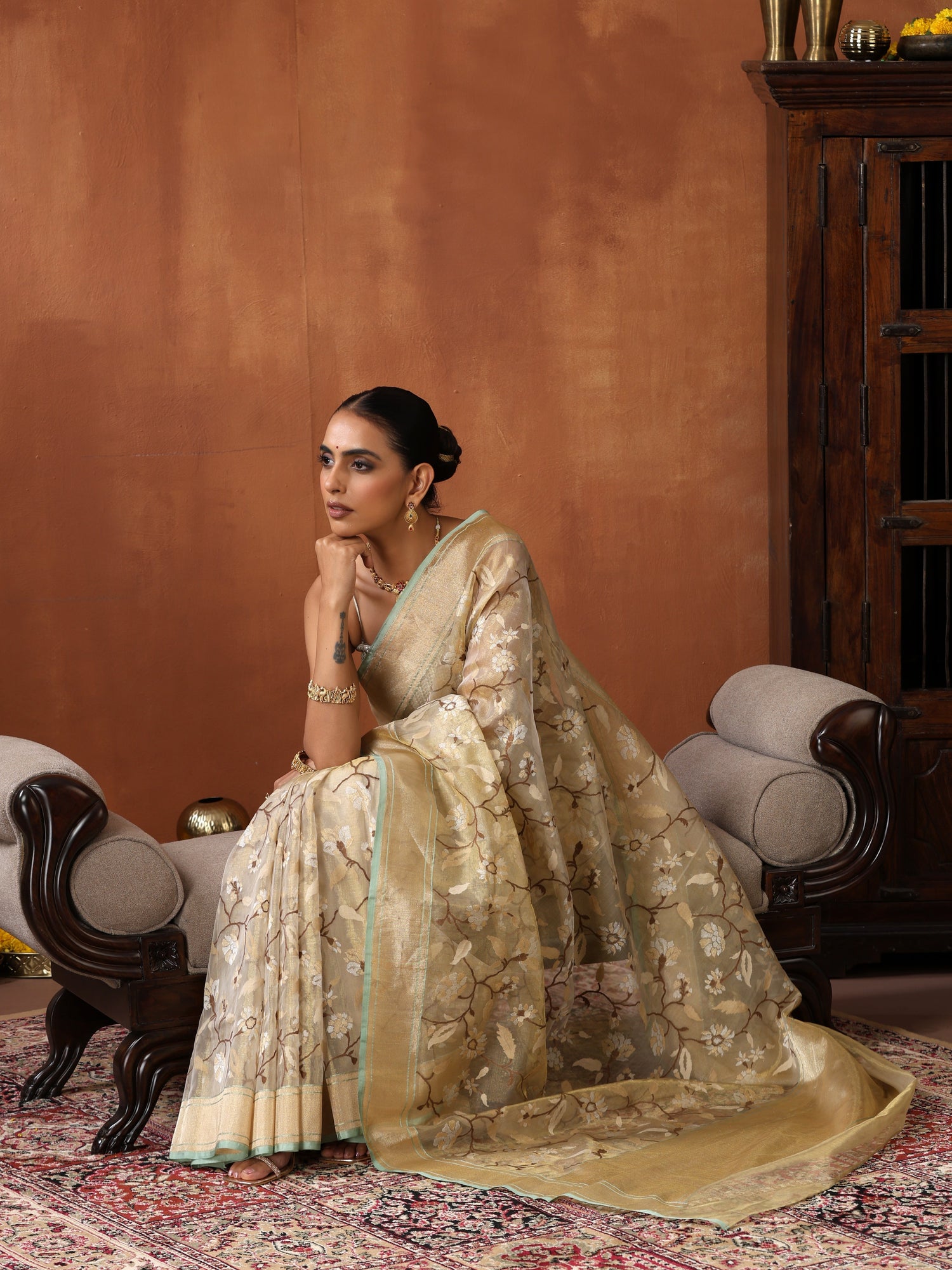Considered one of the most gorgeous queens, the Last Maharani of Jaipur, Maharani Gayatri Devi will be an unforgettable image in Indian royalty for generations to come. The impeccable sense of style, the regalness and the elegance she had are beyond words. Born on May 23, 1919, in London, she grew up to be an independent, and one of the most modern Maharanis.
She was the third Maharani consort of Jaipur from 1940 to 1949, through her marriage to Maharaja Sawai Man Singh II. Following her husband's signature for the Jaipur State to become part of the Union of India and her step-son's assumption of the title in 1970, she was known as Maharani Gayatri Devi, Rajmata of Jaipur.

Early Life
Brought up in a non-Rajput community, Maharani Gayatri Devi was the daughter of Maharaja Jitendra Narayan and Maharani Indira Raje. She belonged to a dynasty native to Cooch Behar in Bengal. Her mother, the daughter of Maharaja Sayajirao Gaekwad III and Maharani Chimnabai, from the Gaekwad dynasty of the Marathas, played an important role in her upbringing as a fierce woman.

Political Career
After partition and independence of India in 1947, Gayatri Devi ran for Parliament in 1962 and won the constituency in the Lok Sabha in the world's largest landslide, winning 192,909 votes. She continued to hold this seat in 1967 and 1971 as a member of the Swatantra Party founded by C. Rajagopalachari, running against the Indian National Congress party.
In 1965, during a meeting with Prime Minister Lal Bahadur Shastri, Gayatri Devi was again asked to join Congress. This was the time when, despite the fact that her husband was being made ambassador to Spain, she stuck to her principles and decided not to join the party. She retired from politics and published her biography, A Princess Remembers, written by Santha Rama Rau, in 1976. She was also the focus of the film Memoirs of a Hindu Princess, directed by Francois Levie.

Love for Handlooms
Maharani Gayatri Devi’s style reflected her fierce nature and her royalness in every inch. She had immense love and admiration for different handloom sarees. On many special occasions and parties, you could see her wearing a handloom saree.
Pairing each of her sarees with an elegant set of jewels, she made sure not to fall short on royalness. Soft shades of pastel green, blue and pink were her favorites. Being an Indian Maharani, she was expected to be dressed in traditional attire. And she was typically seen wearing a long sleeve blouse with her sarees to maintain the traditional touch to her look. However, her bob-cut hair all along made sure that she was still that independent, fierce and unconventional woman inside.
Her inspiration for her royal sense of style came from her mother. She said in an interview that her mother always knew where to shop and how to wear a saree elegantly. Her mother Maharani Chimnabai had the best collection of Chiffon Sarees that she always admired.
Bangalore based Clothing store, Angadi Galeria has borne witness to the patronage of the finest royalties in our country. Maharani Gayatri Devi is supposed to have known to stop by the store for their saree fix.

Maharani’s Style
She made the best out of every situation that came along and became one of the most unconventional Maharanis in the Indian Royal history. Not only known for her political life, but also for her social work, reviving the then-dying art of blue pottery. She also revived the image of handloom sarees at that time. Thousands of women fell in love with sarees all over again. Every saree that she wore became a style statement.
The panache with which she used to carry her sarees, be it a political gathering or a private function was impeccable. Floral prints, pastel colors, minimal jewels, and her poise became the talk of the Indian Royalty. She was admired and idolized by many for her dynamic nature and sense of style. She was the last and the most famous Maharani in the history of Indian royal families. Maharani Gayatri Devi was listed in Vogue among the 10 most beautiful women in the world. She looked as much resplendent in sarees as she looked in khaki pants.
Last days
With a mindset to live life to its fullest, she never had any regrets in her life. She lived with style, poise, and elegance. She was the epitome of ferocious beauty with a traditional sense of style. Her journey ended on 29 July 2009 due to lung failure, as reports said. Her 90 years of life full of love, compassion, and regalness will always be remembered.

If you are looking at supporting handmade and buy Handloom Banarasi silk attires online, you can find them all in this one-stop-shop Khinkhwab - The Essence of Banaras
Like and follow us on Social media: Facebook | Instagram | Twitter | Pinterest





